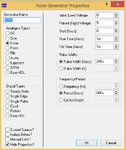shaolinyo
Newbie level 6
hello , i need help please,
i simulate simple RL circuit in proteus but it give wrong values , values differrent from the theoretical carlculation



the voltage across inductor when the switch is open sould be 110 v but proteus give 5V
but using pspice it gives result near the theoretical result


i want to know what is the problem of proteus simulation
thank you
i simulate simple RL circuit in proteus but it give wrong values , values differrent from the theoretical carlculation



the voltage across inductor when the switch is open sould be 110 v but proteus give 5V
but using pspice it gives result near the theoretical result

i want to know what is the problem of proteus simulation
thank you




